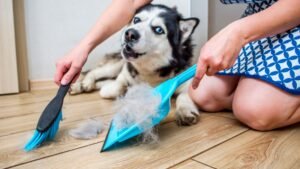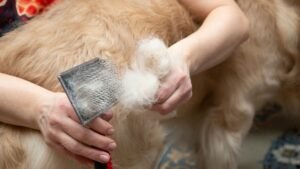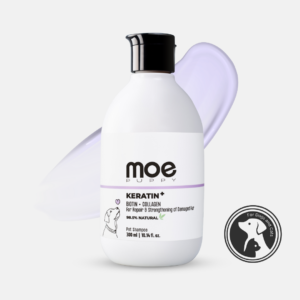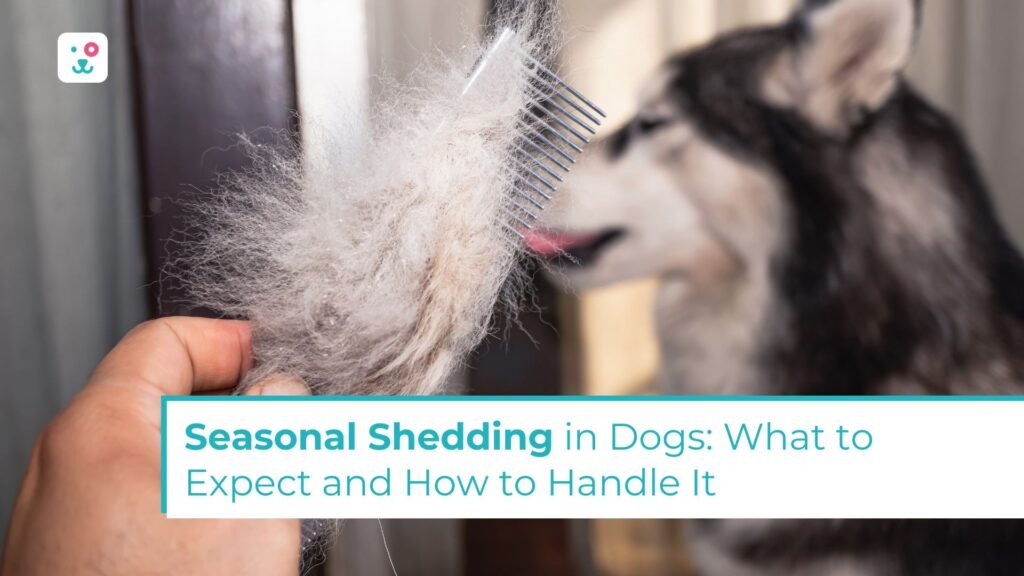Understanding Seasonal Shedding
Dogs naturally shed their fur to regulate body temperature and maintain a healthy coat. Shedding is influenced by seasonal changes, with increased hair loss occurring in spring and fall. While some Dog shedding is normal, excessive hair loss may indicate health issues that require attention.
Why Do Dogs Shed?
Shedding serves a biological purpose, helping dogs adapt to changing weather conditions. There are two main types of shedding:
- Seasonal Shedding: Occurs primarily in double-coated breeds, where the thick winter coat is shed in spring and a denser coat grows in fall.
- Year-Round Shedding: Seen in breeds with continuously growing hair, such as Poodles, which require regular grooming rather than shedding their coats naturally.
How Seasonal Changes Affect Dog Shedding
- Spring Shedding: Dogs lose their thick winter coats to prepare for warmer temperatures.
- Autumn Shedding: The lighter summer coat is replaced with a dense winter coat for insulation.
The amount of shedding depends on the breed, coat type, and individual health of the dog.

Breeds Prone to Heavy Shedding
Certain breeds shed more than others due to their coat structure.
- Heavy Shedders: Siberian Huskies, Golden Retrievers, German Shepherds, Alaskan Malamutes, Labrador Retrievers
- Moderate Shedders: Cocker Spaniels, Border Collies, Shiba Inus, Australian Shepherds
- Low Shedders: Poodles, Bichon Frises, Maltese, Yorkshire Terriers
Double-coated breeds experience the most dramatic seasonal shedding, while single-coated breeds tend to shed minimally.
Signs of Normal vs. Excessive Shedding
Normal shedding occurs evenly throughout the coat without any bald patches or skin irritation. However, excessive shedding could indicate underlying health concerns such as:
- Bald spots or patchy hair loss
- Dry, flaky, or irritated skin
- Constant scratching or excessive licking
- Changes in coat texture or color
If these symptoms arise, a veterinarian visit is necessary to rule out medical conditions.
Causes of Excessive Shedding
- Poor Diet: Deficiencies in omega-3 fatty acids, proteins, and essential vitamins can result in weak, brittle hair that sheds excessively.
- Allergies: Food allergies, environmental allergens, or flea bites can cause itching and excessive hair loss.
- Stress & Anxiety: Major lifestyle changes, separation anxiety, or lack of stimulation can contribute to abnormal shedding.
- Parasites & Infections: Fleas, ticks, and fungal infections like ringworm can cause hair loss and irritation.
- Hormonal Imbalances: Conditions like hypothyroidism or Cushing’s disease may lead to excessive shedding and thinning fur.
How to Manage Seasonal Shedding
Proper grooming and nutrition can significantly reduce shedding and promote a healthier coat.
Regular Brushing
- Use an undercoat rake or deshedding tool for double-coated breeds.
- A slicker brush works well for dogs with long or curly coats.
- Short-haired breeds benefit from a rubber curry brush to remove loose fur.
Brushing daily during peak shedding seasons helps remove dead hair before it spreads around the house.

Bathing with the Right Shampoo helps in Dog Shedding
Bathing your dog with a hydrating, anti-shedding shampoo can help reduce excess shedding. Look for shampoos with:
- Keratin & Biotin: Strengthens hair follicles and promotes growth.
- Omega-3 & Omega-6 Fatty Acids: Nourishes the skin and coat.
- Aloe Vera & Oatmeal: Soothes irritation and prevents excessive dryness.
A highly recommended product is Keratin with Biotin and Collagen Dog Shampoo. This shampoo is specially formulated to strengthen the coat, reduce breakage, and provide essential hydration for dogs with excessive shedding concerns.

Dietary Support for a Healthy Coat
A well-balanced diet plays a crucial role in maintaining healthy skin and coat. Nutrients essential for reducing excessive shedding include:
- Omega-3 Fatty Acids: Found in fish oil and flaxseed, these support skin hydration and coat health.
- Biotin & Zinc: Strengthen hair structure and reduce breakage.
- Protein-Rich Foods: Ensure a high-quality protein source, such as chicken, salmon, or lamb, to support healthy fur growth.
Providing ample fresh water is also essential to prevent dry skin and excessive shedding.
Grooming Tips for Heavy Shedders
- Brush your dog at least 3-5 times per week.
- Use a high-velocity dryer after baths to blow out loose fur.
- Wipe your dog down with damp microfiber cloths to catch excess hair.
- Vacuum regularly and use furniture covers to manage shedding indoors.
Also Read: Hair Maintenance Tips For Long Coat Dogs
Home Remedies to Reduce Shedding
- Coconut Oil: Adding a small amount to your dog’s diet can improve coat shine and skin hydration.
- Apple Cider Vinegar Rinse: A diluted rinse can help soothe skin irritation.
- Eggs & Flaxseeds: Natural sources of biotin and omega fatty acids for coat strength.
When to See a Vet About Shedding
If your dog experiences severe hair loss, itching, or skin irritation, it may indicate an underlying health problem. Conditions such as hypothyroidism, mange, and fungal infections require professional diagnosis and treatment.
Preventing Future Shedding Issues
- Stick to a consistent grooming routine.
- Provide high-quality nutrition with essential fatty acids.
- Keep up with regular veterinary check-ups.
- Ensure your dog stays hydrated and stress-free.
Common Myths About Dog Shedding
- Shaving a Double-Coated Dog Reduces Shedding – False! Shaving can damage the coat and affect temperature regulation.
- Hypoallergenic Dogs Don’t Shed – False! Some breeds shed less, but all dogs shed to some extent.
- Frequent Bathing Increases Shedding – False! Using the right products and moisturizing ingredients can help manage shedding.
Conclusion
Seasonal shedding is a natural process that varies across breeds. While you cannot stop shedding entirely, you can manage it with regular grooming, a nutritious diet, and proper skin care. Understanding your dog’s shedding cycle and maintaining a proactive grooming routine will keep both your pet and your home cleaner and healthier. If you notice abnormal hair loss, consult your veterinarian to rule out any medical issues and ensure your furry friend remains happy and comfortable.

